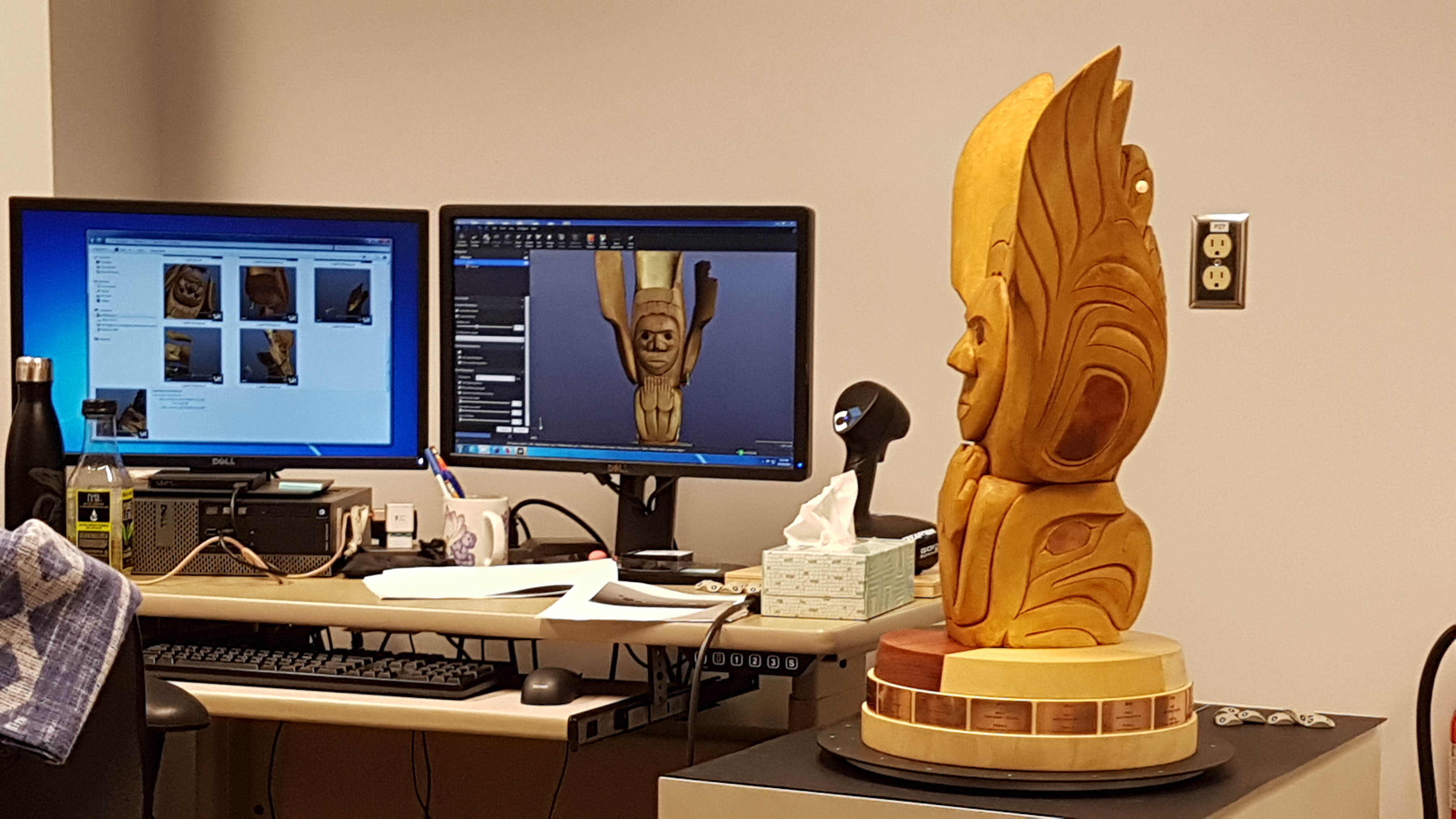At the Intersection of Art and Sport
When you think of sports championships, there is always the goal of winning the big trophy – Grey Cup, Stanley Cup, Rose Bowl, World Cup, and so on. When the National Aboriginal Hockey Championships (NAHC) needed a trophy, they turned to artist Carey Newman to carve one. He created the Turtle Island Trophy. While the trophy is a beautiful artwork in and of itself, it is not the most durable object to hoist overhead on the ice, so the artist and the NAHC approached us to 3D scan the trophy and provide a file to use to create a copy.

